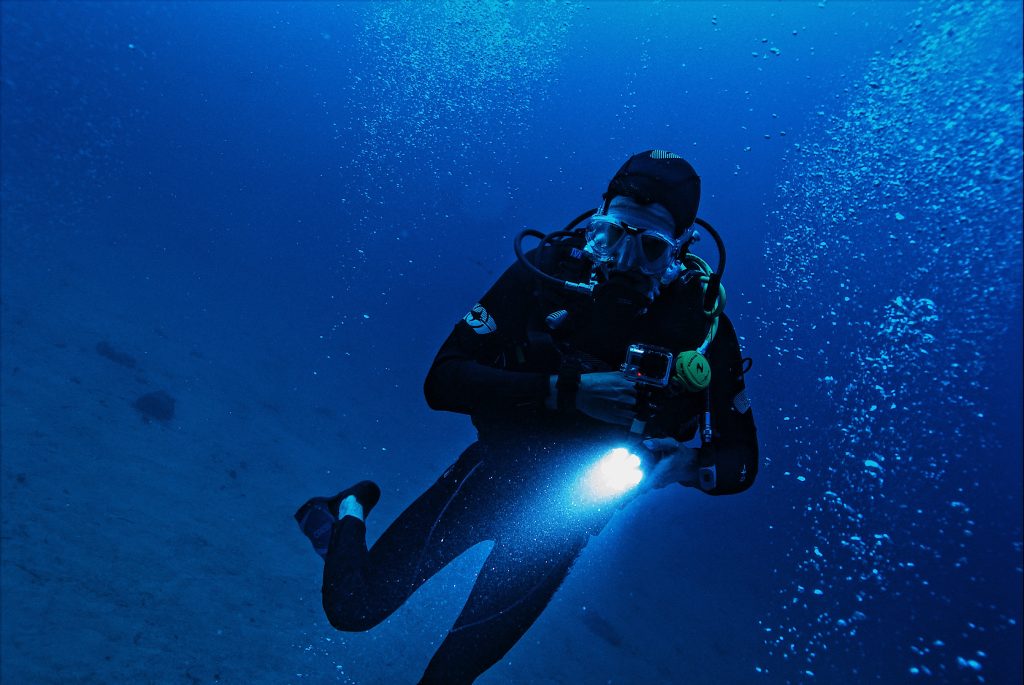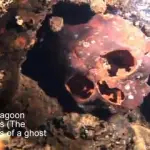
Your interest into how deep a human can dive may be driven from the unfortunate disaster and failure of the submarine that dived on the Titanic, or it might be because you are considering scuba diving as a hobby. There has been research into how deep a human can dive without being crushed.
Human survival limits underwater vary but are generally around 305 to 457 meters (1,000 to 1,500 feet), with an absolute maximum of approximately 915 meters (3,000 feet); however, the crush depth affecting the lungs occurs at around 396 meters (1,300 feet), and there’s a 99% chance of fatality at 335 meters (1,100 feet).
The research into the maximum depths humans can survive has been conducted by various scientists, physicians and diving experts over the years.
Some of the key researchers and publications include:
- Dr. Peter Bennett: Navy doctor Dr. Peter Bennet directed early hyperbaric research on deep diving physiology in the 1960s. He estimated human survival limit to be around 915 meters (3,000 feet) depth.
- Dr. Albert Behnke: Dr. Albert Behnke was a pioneer in decompression science and dive physiology at Duke University, North Carolina USA. He conducted extensive research on the effects of pressure up to 305 metres (1,000 feet) in the 1930s-1950s. Dr Albert Behnke’s research suggested humans have a survival limits around 457 meters (1,500 feet).
- Dr. Arthur Bachrach: Physician Dr. Arthur Bachrach at University of Maryland researched the effects of increasing water pressure. Dr. Bachrach proposed human depth limits of about 305 metres (1,000 feet) in his 1972 book Limits of Human Underwater Performance.
- Brian Utley: Veteran technical diver Brian Utley, who compiled research across medical journals in the 1980s, suggested human survival limit of 305 metres (1,000 feet) at absolute maximum.
- The US Navy Diving Manual: The The US Navy Diving Manual collates navy experimental dives and chamber tests on deep diving, and cites human crush depth of 396 metres (1,300 feet) based on effects on lungs.
- S.J. Mitchell & T.G. Cronje: S.J. Mitchell & T.G. Cronje produced a modern paper that analysed pressure effects, and they proposed the human depth limit of 335 metres (1,100 feet) before 99% chance of fatality.
So in summary, doctors and researchers like Bennett, Behnke, Bachrach and Mitchell have driven much of the work on defining human depth limits through direct experiments, decompression research and analysis of diving physiology. Their work generally points to 305-457 meters (1,000-1,500 feet) as the maximum survivable depth for humans.
If you are looking to start scuba diving, the above depth limits are off the scale for recreational diving. Also, even the technical divers who deep dive the depths at which the human body will be crushed or cause a fatality is less than the 300 plus metre human depth limit.

So whilst humans can dive to impressive depths, there are limits before the pressure becomes dangerous.
Here are some key facts about the depths humans can reach:
- Most recreational scuba divers only go to depths of 18-40 meters (60-130 feet). At these depths, the pressure doubles or triples compared to the surface pressure.
- Technical divers using specialised equipment and training can go to depths of around 90-120 meters (300-400 feet). The pressure at 90 metres (300 feet) is about 11 times higher than at the surface. Divers who dive this deep will need to ascend very carefully and do a staged decompression ascent.
- The current world record for deepest scuba dive is 332 meters (1090 feet), which was set by an Egyptian diver in 2014. At this depth, the pressure is over 350 times higher than at the surface.
- Much beyond 122 metres (400 feet), the risk of nitrogen narcosis, oxygen toxicity, and decompression sickness increases dramatically. No human has ever gone beyond around 400 meters (1300 feet) of depth.
- At depths beyond about 450 meters (1500 feet), the pressure would crush the rib cage and lungs of any human. Also, research estimates humans could not survive beyond 915 meters (3000 feet) of depth.
So in summary, 90-120 metres (400-500 feet) is around the maximum depth reachable by highly trained technical divers.
Beyond 305 metres (1000 feet), the human body cannot withstand the pressure and could be crushed, having said that the deepest verified dive by a human is just over 305 metres (1000 feet), but I wouldn’t recommend you put this theory to the test.
Safe diving – not going to body crushing depths
The depth to which a human can safely dive without being crushed depends on several factors. These include an individual’s physiology, the rate of descent and ascent, the equipment used, and the duration of the dive.
The primary concern when diving to significant depths is the increase in pressure as you descend into the water, where this pressure can have a number of adverse effects on the human body. These include decompression sickness, barotrauma and nitrogen narcosis:
- Decompression sickness (DCS): This condition results from nitrogen bubbles forming in the bloodstream and body tissues due to rapid ascent after deep dives. To prevent DCS, divers must ascend slowly and make decompression stops to allow nitrogen to safely off-gas from their bodies.
- Barotrauma: This is caused by the pressure difference between the inside and outside of the body. It can affect the ears, sinuses, and lungs. To prevent barotrauma, divers must equalise the pressure in their ears and sinuses by gently equalising these during descent. To avoid a barotrauma of the lungs, scuba divers must follow the number one rule of scuba diving, which is to not hold their breath when diving.
- Nitrogen Narcosis: As you go deeper, the increased pressure causes the body to absorb more nitrogen from the breathing gas. At a certain depth, nitrogen narcosis, also known as “raptures of the deep,” can set in, which can lead to impaired cognitive function and judgment. The onset depth varies between individuals but often occurs around 30 metres (100 feet) or deeper, which is the depth when I get affected.
- Crushing Pressure: The greatest concern for deep diving is the crushing pressure caused by the weight of the water above. to give you an idea, at a depth of around 10 metres (33 feet), the pressure is twice that of the surface. For every additional 10 meters (33 feet) of depth, the pressure increases by another atmosphere (approximately 14.7 psi or 1 bar). This pressure can be lethal if not managed properly.
To mitigate the effects of pressure, divers use various techniques and equipment:
- SCUBA Gear: Self-contained underwater breathing apparatus allows divers to breathe compressed air, a mixture of gases, or even pure oxygen at depths. The choice of breathing gas depends on the dive profile and depth. Different breathing gases includes nitrox and trimix gases.
- Dive Tables and Computers: Divers use dive tables or dive computers to plan and track their dives, helping them avoid exceeding safe depth and time limits.
- Decompression Stops: For deep dives, divers may need to make decompression stops during their ascent to safely release excess nitrogen absorbed at depth.
- Technical Diving: Technical divers use specialised equipment and training to go deeper and stay underwater for longer, which often involves using mixed gases and advanced safety protocols.
Related questions:
How deep can a human go underwater without dying?
A human is unlikely to be able go underwater much beyond 335 metres (1,100 feet) before dying, as S.J. Mitchell & T.G. Cronje prepared a modern paper that analysed pressure effects proposed the human depth limit of 335 metres (1,100 feet) before 99% chance of fatality.
Humans can dive to impressive depths, but there are limits. Most divers only go to 18-40 metres (60-130 feet), but technical divers with specialized training and gear can reach 90-120 metres (300-400 feet).
The current world record for a scuba dive is 332 metres (1,090 feet). Much beyond 120 metres (400 feet), risks like nitrogen narcosis and decompression sickness increase dramatically.
No human has gone beyond around 400 metres (1,300 feet) depth, but estimates suggest humans could not survive beyond 1,000-1,500 feet before being crushed from extreme water pressure. So the maximum depth reachable is around 305 metres (1,000 feet) for highly trained technical divers. Beyond that, the human body cannot withstand the pressure.
I hope you enjoyed this article about how deep can a human dive without being crushed?
I’d love to hear from you. Tell us about your adventures of diving and snorkeling, in the comments below. Please also share your photos. Either from your underwater cameras or videos from your waterproof Gopro’s!
If this article hasn’t answered all of your questions. If you have more questions either about snorkeling or scuba diving (or specifically about how deep can a human dive without being crushed?), please comment below with your questions.
There will also be many more articles about scuba diving (and snorkeling) for you to read and learn about these fabulous sports.
Have fun and be safe!




